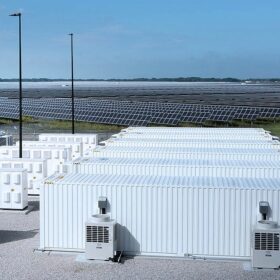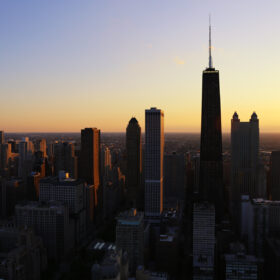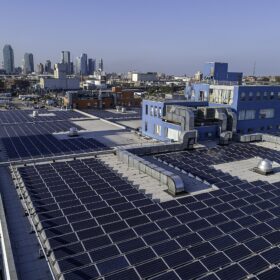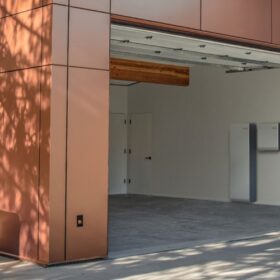The solar industry has always been volatile, but the pace of change is accelerating. The economics of solar are shifting, and the short-term outlook is increasingly uncertain. Headwinds such as volatile input costs and rapid policy changes are leaving little time for the industry to adjust and respond to the new reality.
Despite these near-term challenges, the long-term trajectory of solar remains strong. Solar is already the lowest-cost source of energy generation and one of the fastest to deploy. That is no accident. The industry continues to innovate and drive improvements in both cost and speed.
One of the greatest opportunities to continue that momentum lies in integrating the traditionally siloed hardware systems on the DC side of the solar project.
Historically, utility-scale solar projects were structured around four distinct hardware categories, with EPCs managing procurement and design decisions independently:
- Module,
- Inverter,
- Racking,
- eBOS
A surprising hub emerges for vertical integration
The module — as the largest cost driver — was the primary focus, while other components were often treated as commodities. But as project margins tighten and competition increases, the value of tighter integration across these components has become clear.
For a while, it looked like module manufacturers might lead this integration. Trina’s acquisition of Clavijo and Qcells’ acquisition of Solar FlexRack signaled intent. But those efforts have largely stalled, highlighting just how difficult meaningful integration really is — particularly across companies with different core competencies and product design cycles. Integration is difficult — and valuable.
There are only a few viable paths to integration that create real value for customers:
1. Project Design Integration: Can we engineer projects holistically — not just to lower hardware costs but optimize energy yield and ease of installation? This means accounting for site conditions, civil costs, and performance from day one.
2. Hardware Integration: This is the most visible and mechanical form of integration. Examples include module and racking systems designed to lock together or racking that leverages module rigidity to reduce steel requirements. Built in wire management is critical.
3. Field Integration: Managing logistics, scheduling, and installation of multiple components from a single source reduces friction. By integrating procurement and field services — including mechanical installation — we can shorten project schedules and minimize onsite risk.
Ultimately, these efforts are about creating value by reducing total installed cost, improving quality, and maximizing energy yield. And of course, offering “one hand to hold” is a customer-centric model that streamlines accountability and communication — the same concept that made distribution successful in other industries.
However, distribution hasn’t worked well in DG or utility-scale solar due to the custom nature of project engineering. That’s why racking has emerged as the natural integration point — it connects the module, inverter, and eBOS to the land, both physically and operationally.
Racking as the center of the solar plant
Racking has always been the structural and electrical backbone of the plant. It interfaces with nearly every DC component and is uniquely positioned to unify design and execution across the site.
Recent strategic moves signal that the industry is beginning to agree.
Since 2021, annual corporate mergers and acquisitions in the solar industry have ranged from 80 to over 110, jumping up from the annual average across the previous five years. Several centering on racking have gained the attention of the industry, specifically, Nextracker’s acquisitions of Ojjo, SPI, and Bentek. This, along with Array’s acquisitions of APA and GameChange’s launch of a transformer business point to a shift toward integrated DC platforms.
Building a platform, not just products
These moves mirror the strategy Terrasmart adopted more than five years ago — combining foundation solutions, multiple racking technologies, and a full eBOS offering into one developer-focused, integrated solution.
Terrasmart has spent years building this platform. Beyond hardware, two additional services complete the integrated DC platform vision:
1. Developer-Focused Software Early-stage design tools help developers choose the optimal system — fixed tilt vs. tracker, tracker type, layout variations — all while analyzing civil costs, energy yield, and project IRR.
2. Installation Services Especially critical in the DG market, in-house installation teams ensure a seamless execution. By keeping installation of what the racking company designs and manufactures in-house, it maximizes efficiency, reduces O&M risk, and ensures long-term performance.
The market is catching up
So what’s next? Are traditional racking companies becoming obsolete? Are we entering the era of the DC solution company?
Developers and owners have become far more engaged in hardware selection. Where once only modules were owner-procured, we now regularly see highly curated approved vendor lists — or even direct specifications — for racking and eBOS.
This shift reflects a deeper strategic alignment. Owners are taking a long-term view of asset performance and value. They’re prioritizing quality, reliability, and execution over pure cost — because they’ve seen what happens when suppliers underperform or exit the market.
The flight to safety is real
Too many solution providers have failed to meet expectations or gone bankrupt entirely, leaving owners with retrofit costs and long-term O&M burdens. The volatility of the supply chain has forced a change in mindset.
Today’s customers want fewer partners, not more. They want partners who understand integration, who can own the process end-to-end, and who offer long-term support.
There are no more tracker companies. No more racking companies. There are DC Solution Providers — and they are the future of this industry.

Yury Reznikov is chief sales officer of Terrasmart, a provider of solar racking technologies, electrical balance-of-system products, installation services, and project optimization software.
The views and opinions expressed in this article are the author’s own, and do not necessarily reflect those held by pv magazine.
This content is protected by copyright and may not be reused. If you want to cooperate with us and would like to reuse some of our content, please contact: editors@pv-magazine.com.







By submitting this form you agree to pv magazine using your data for the purposes of publishing your comment.
Your personal data will only be disclosed or otherwise transmitted to third parties for the purposes of spam filtering or if this is necessary for technical maintenance of the website. Any other transfer to third parties will not take place unless this is justified on the basis of applicable data protection regulations or if pv magazine is legally obliged to do so.
You may revoke this consent at any time with effect for the future, in which case your personal data will be deleted immediately. Otherwise, your data will be deleted if pv magazine has processed your request or the purpose of data storage is fulfilled.
Further information on data privacy can be found in our Data Protection Policy.